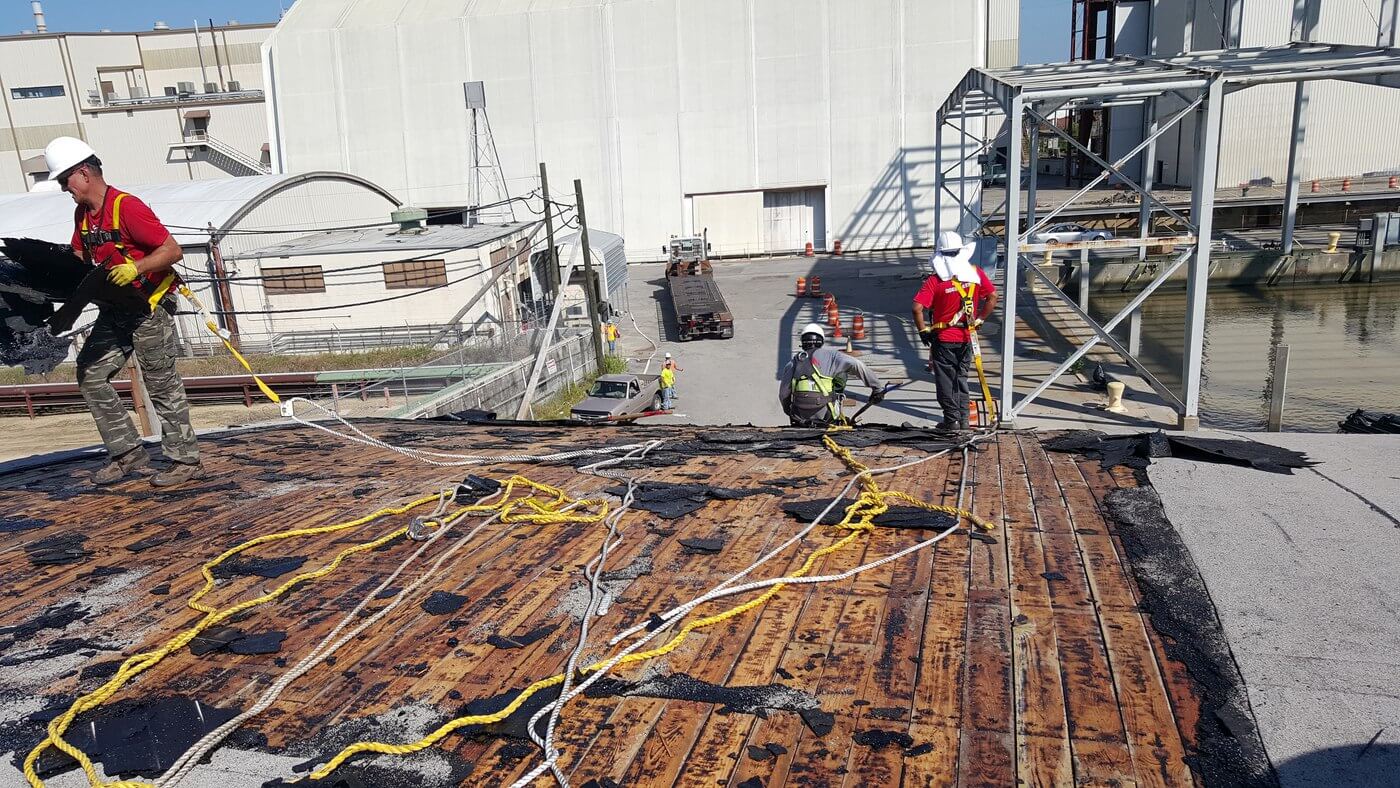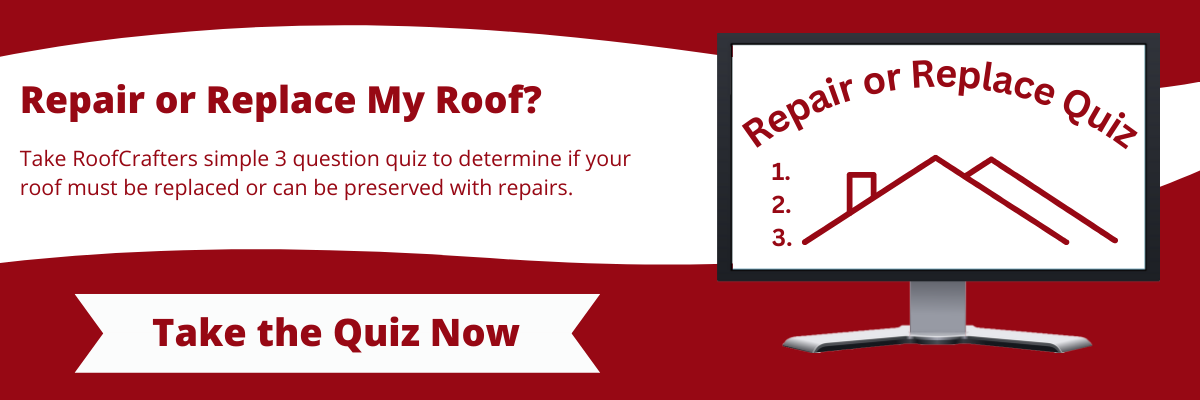
Commercial roofing is made to be strong and powerful, and because of that, many overlook the thought that one day, an insidious threat could occur. Okay, that's a bit dramatic. But really- roof punctures are serious business and shouldn't be ignored. Whether caused by human error, wear and tear, or storm damage, a hole or crack in your roof invites the bad stuff in.
RoofCrafters has repaired battered commercial rooftops for nearly thirty years, and we've seen the damage they can endure in the blink of an eye. As a business owner, we're sure you want to do everything you can to keep your roof from failing, so let's delve into an essential topic that'll help keep you on your toes.
This article explores the causes and consequences of roof punctures, from fallen tree limbs to improper installation. By understanding these hidden vulnerabilities, you can better address any future punctures that ail the roof of your business. We all want to protect our assets, don't we? Let's get started!
Common Roof Punctures
Roof punctures can arise from various sources, each presenting its own set of challenges. Here are some of the most common types of roof punctures encountered on commercial buildings:
- Foot Traffic: Frequent foot traffic on commercial roofs, particularly during maintenance or inspections, can lead to unintentional punctures. Missteps, dropped tools, or heavy equipment can cause small holes or tears in the roofing material.
- Falling Debris: Overhanging branches, loose equipment, or flying materials during severe weather can puncture the roof's surface on impact. Weather events like hail, ice, or strong winds are enormous sources of dislodged debris and commonly cause punctures.

- HVAC Installations: Improper installation or maintenance of heating, ventilation, and air conditioning (HVAC) systems can result in punctures. Sharp metal edges, screws, or nails from HVAC equipment or ductwork may pierce the roof membrane.
- Satellite Dish or Antenna Installations: Mounting satellite dishes, antennas, or other rooftop equipment requires careful consideration to avoid roof puncturing. If not secured properly, these installations can damage the roofing material.
- Age and Wear: Over time, the roofing material can degrade due to exposure to the elements, UV radiation, and temperature fluctuations, making it more susceptible to punctures from ordinary foot traffic or minor impacts.

- Animals: Wildlife, such as birds, rodents, or insects, can cause punctures when they nest on or burrow into the roofing system. Their activities may lead to weakened areas or holes in the roof membrane.
Understanding the most common sources of roof punctures is vital for every commercial property owner! Doing so will help you stay vigilant in protecting your building.
How to Prevent Roof Punctures
Preventing roof punctures is crucial to maintaining the integrity of a commercial roof and avoiding costly repairs. Here are some effective strategies to help prevent them:
- Trim Overhanging Trees: Regularly trim branches and foliage that overhang the roof to prevent falling debris and reduce the risk of punctures during storms or strong winds.
- Get Routine Inspections: Having inspections performed by qualified professionals to detect any signs of wear, tear, or punctures in the roofing system is vital. Early detection can prevent minor issues from developing into major problems!

- Address Creepy Crawlies: Promptly source any signs of wildlife intrusion, such as nesting birds or rodents, and take preventive measures to deter them from returning to your roof.
- Choose Durable Roofing Materials: Ever heard the term "prevention is key?" Opt for high-quality roofing materials that are resistant to damage, especially in areas with high foot traffic or exposure to potential hazards.
By implementing these preventive measures and maintaining a proactive approach to maintenance, you can significantly reduce the risk of roof damage- ensuring your commercial roof remains sturdy and reliable for years to come.
Will My Damaged Roof Spring a Leak?
One of the first visible signs of roof damage is often leakage, so you may wonder if that's what will happen to yours. While we don't have the exact answer for your specific roof, we can give you some examples of what damage typically causes leaks below:
Missing or Damaged Shingles: Shingles can become dislodged or damaged due to severe weather conditions like high winds, hail, or heavy rain. Lost or broken shingles create gaps in the roof's protective barrier, allowing water to penetrate the underlying layers and eventually lead to leaks.

Cracked or Blistered Roofing Materials: Over time, roofing materials can develop cracks or blisters due to age, exposure to UV radiation, or poor installation. These cracks and blisters compromise the integrity of the roof, enabling water to seep through and cause leaks.
Damaged or Improperly Installed Flashing: Flashing is installed around roof protrusions, such as chimneys, vents, skylights, and roof valleys, to prevent water infiltration. If flashing is damaged, improperly installed, or deteriorated, it can create gaps where water can enter and result in leaks.
Clogged Gutters and Downspouts: When gutters and downspouts are clogged with debris like leaves, twigs, or dirt, they fail to channel water effectively away from the roof. As a result, water can accumulate on the roof, seep beneath shingles, and cause leaks.

Ice Dams: In cold climates, ice dams can form along the roof's eaves when snow melts and refreezes. The trapped water can back up under the shingles, leading to leaks and water damage.
Fun fact: The hole might not be where the water is coming from. If rainwater is leaking into your roof, the source may not be directly above. Water is able to travel from the leak to a completely different part of your building. While the water may be coming into your kitchen, the leak may actually be above the living room. You'll need a professional to determine the actual source of the leak!
Is My Roof Vulnerable to Damage?
Unfortunately, it could be. Punctures in commercial roofs prove to be a significant and often underestimated threat to the structural integrity of buildings! By being proactive in protecting your business, you'll be able to hold onto your investment a little longer before having to get a replacement. To some business owners, that means everything!
If you have any concerns or questions regarding your commercial roof or a potential new one, RoofCrafters is happy to give you a hand. If you live in one of our service areas, help is just a phone call away. When you're ready, visit our contact page to connect with one of our caring representatives. We're here to take the pressure off your shoulders!
My name is Kevin Mills, and I am the lead estimator for RoofCrafters’ Tampa division. I’m originally from Michigan, and I enjoy hunting, fishing, and spending any free time outdoors. What I’m most passionate about, though, is helping business owners and homeowners alike achieve their roofing goals, all while providing a seamless customer journey.




